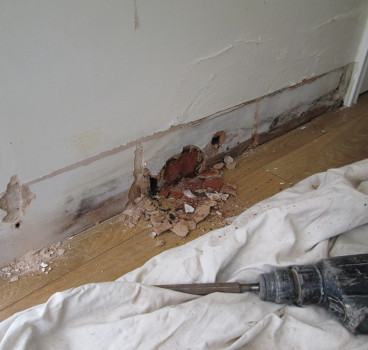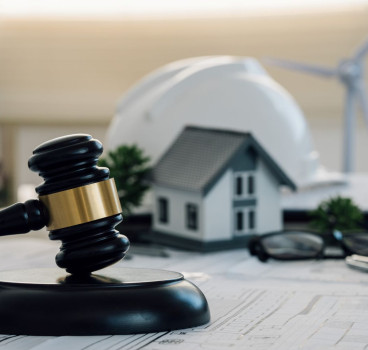Sustainability should not come at a cost of fire resilience in schools
There is something quietly encouraging about the story of St Mary’s Catholic Voluntary Academy in Derby. Following its destruction by fire in 2020, the school has been rebuilt, not simply with an eye to sustainability, but with resilience front and centre. In a move that was not required by regulatory guidance, Derbyshire County and Derby City Councils chose to install sprinklers in the new timber-framed school. In doing so, they sent a clear message: we have learned from the past, and we are committed to protecting our schools from the avoidable disruption and devastation that fire can bring. But will this message resonate more widely across the educational sector, writes Iain Cox, Chair of Business Sprinkler Alliance?
The new St Mary’s reflects a broader shift toward the use of timber and modern construction techniques in school construction, driven by the need to reduce carbon emissions and embrace more sustainable methods of building. This is backed by government initiatives, which is unsurprising given that the government is the main funder of new school projects
Timber is renewable, low in embodied carbon, and can contribute significantly to the achievement of high environmental ratings. But the use of combustible materials like mass timber also introduces new fire risks that, if not addressed with equal care, can undermine all of the gains made in sustainability. St Mary’s illustrates that this balance can be struck, but only when resilience is valued as much as emissions reductions.
Unfortunately, that is not always the case. Consider the Carbon Neutral Laboratory in Nottingham, which also opted for a timber structure as part of a bold commitment to sustainable construction. The building was destroyed by fire before it was even fully operational, and while it was later rebuilt, there was no meaningful shift in the approach. The replacement building had no increase in fire resilience, no active fire protection such as sprinklers, and had a design that is, in the contractor’s words, “indistinguishable” from the original. It is perhaps most telling that the rebuilt laboratory has since gone on to win multiple sustainability awards, despite the fact that it had to be constructed twice due to a fire that may well have been preventable.
This is the contradiction at the heart of the current conversation around sustainable design. Building low-carbon, energy-efficient schools and public buildings, must not be done in a way that discounts the long-term risk and disruption that fire can cause. This is not just to the buildings themselves, but to the children, teachers and communities who rely on them. Fires in schools, particularly where timber is involved and no active fire protection is present, can lead to total loss. While the cost of rebuilding may fall to insurers or local authorities, the cost to education and the wider community is harder to measure and impossible to refund.
Temporary classrooms, often hastily erected in the aftermath of a fire, can offer excellent learning spaces. However, they will be sited on the edge of what will be a construction zone. Children may be relocated across different sites, moved further from home, or taught in facilities that lack the full range of resources they previously had access to. At a time when government policy explicitly links school attendance to attainment, and even fines families for short-term absences, the idea that we would not do everything possible to avoid extended closure due to fire seems deeply inconsistent.
The good news is that solutions already exist. Sprinklers have a proven track record of reducing damage, containing fire to the room of origin, and enabling rapid reoccupation of buildings following a fire. In Derbyshire, that lesson has been taken seriously, with both councils now committed to fitting sprinklers in all new school buildings and in major refurbishments or extensions. This approach aligns with the intentions of Building Bulletin 100 (BB100)1, which recommends sprinklers in all new schools except for the very lowest risk categories. This is a principle that the government is currently reviewing as part of its wider fire safety reforms.
What is less clear is why this expectation is still not being applied consistently across England. In contrast to Derbyshire, other sectors affected by fires have not adjusted their strategies. The rebuilt Carbon Neutral Laboratory is a case in point, but it is not alone. In too many cases, the focus on sustainability seems to be pursued in isolation from the realities of fire resilience, despite clear evidence that the two are not mutually exclusive.
St Mary’s shows us that it is possible to build with timber, meet sustainability goals, and install sprinklers. It demonstrates that good design can embrace both environmental and fire safety objectives. But it also highlights how rare that approach still is and how much work remains to make resilience a standard feature of sustainable construction.
We cannot continue to reward projects simply for their carbon credentials while ignoring the real-world consequences of poor fire protection. A building that burns to the ground and needs to be rebuilt does not incur any penalty in these schemes.
The question we must now ask is a simple one: how many more fires must we see, how many more schools must be closed or rebuilt, before active fire protection becomes a core component of school design policy? When schools are built without sprinklers or other resilience measures, we are essentially gambling on their survival. Sprinklers are not a luxury or an optional extra, they are a vital part of future-proofing our buildings and protecting our children’s right to learn in safe, secure, and uninterrupted environments.
1Building Bulletin 100 (BB100) – Design for fire safety in schools
Additional Blogs

How construction can cut Its carbon footprint by caring for soil
Soil is often dismissed as mere dirt, but it is one of the planet’s most powerful carbon stores, holding more than all of the world’s forests combined. Yet in our rush to build, pave and develop, we...
Read moreWhat is bridging damp? How it happens and how to fix it
Bridging damp happens when moisture finds a path around the building’s damp-proof course (DPC) so it reaches your internal walls and skirting. If you see damp patches rising above the skirting or...
Read more

The silent death of the fixed-price contract
For decades, the fixed-price contract has been the backbone of construction procurement. It promised certainty with a defined scope, an agreed sum and a clear transfer of risk from client to...
Read more